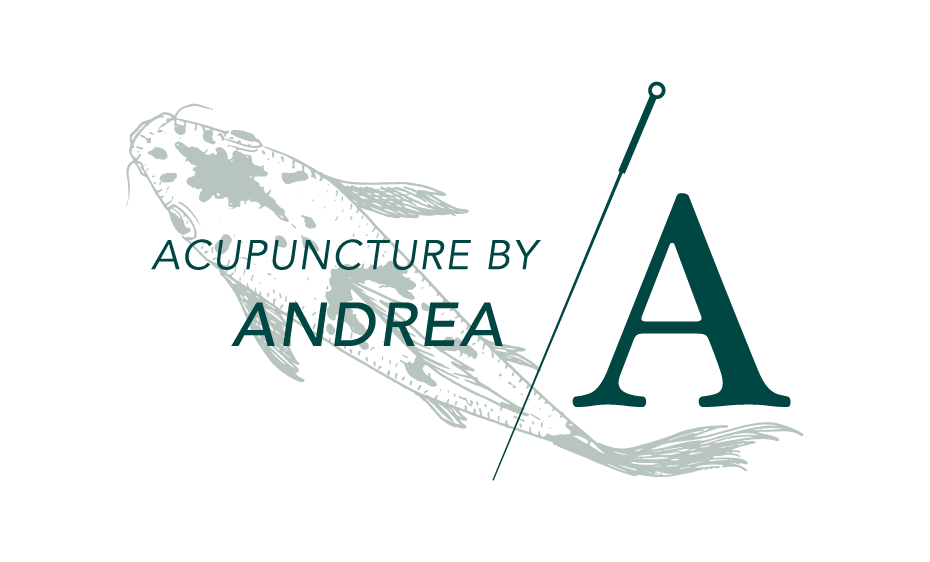Winter Routines And Inner Activity
Change is the natural order of all things. Relationships, jobs, habits and hobbies—we shift our interests and our focus many times throughout a lifetime. When the seasons warm or cool, daylight shortens or lengthens, our routines differ and change as well. During winter there are significant changes in the weather and precipitation, resulting in drastic differences in our sleeping patterns, the food we consume, and our physical habits. In Florida, where the Acupuncture by Andrea office is located, the weather can seem almost the same year-round, but a seasonal change and a shift in lifestyle does take place. In the cooler weather, we desire more warming and heavier “comfort” foods. Sleep patterns change as we sleep in during darker morning hours, and we often find ourselves coming straight home after a day of work to stay in for the night.
These changes are also noticeable in our bodies. Our skin becomes drier in the winter even when that winter is 40 degrees with no windchill. Many of us may put on weight in the colder months and we are less inclined to get up early or stay up late to exercise. Our activities take place more inside than outside, and they tend to be more intellectual than physical in nature. The cold is a time for slowing down, contemplating and creating.
When you feel like making stew and putting on a pair of sweatpants come mid-January, by all means, do so. If relaxation and recovery is what your body needs—particularly after the hectic holiday season—then take a day off your weekly exercise schedule and watch a movie instead. There is a time for action and a time for rest. Tuning in to the changes in your seasonal needs makes for a more enjoyable and productive winter. Allow yourself to cut back on your usual busy routine, but don’t quit your activities, just restructure them.
Winter Eating
What to eat for breakfast is a common question from my patients who are trying to live a healthier lifestyle. When you are considering your morning diet, and really all meals, consider cold vs hot foods and summer vs winter needs, along with considerations of what you like and of course what is good for you.
I am often asked what I eat in the morning. Before influencing my patients with that information, I ask them to tell me what their lifestyle and morning routine is, what types of food they do or don’t like, as well as their blood type. In my practice, the Blood Type Diet has helped me guide many patients in making good food choices for their particular blood type. Like any dietary guidance system, it is not for everyone. We take everything with a grain of salt, sometimes literally!
About my breakfast choices: year-round, I always consume more protein than carbohydrates. This helps to control my appetite during the day more than starting out with processed carbohydrates. Like many others, I enjoy fruit in the morning as it aids in digestion and elimination, but I do caution about the over-consumption of smoothies, many peoples’ favorite go-to meal replacement. While smoothies are easy and quick to make and a portable meal, they are not ideal. There are types of smoothies that are healthier for us, but fruit has a high concentration of sugar, so a little goes a long way. Nut butters are a good source of protein but can create excess phlegm in our lungs and throughout our bodies. This can be exacerbated by other standard smoothie ingredients such as banana, peanut butter, spinach, chia seed and coconut oil. These are nutritious and wholesome ingredients, but they are not good for everyone all of the time. Cold frozen fruits are not the best choice in the middle of winter. At this time of year, something warm and nourishing like a cooked meal is a better alternative and kinder to our spleen and digestive system. Raw and cold foods make digestion more difficult as the digestive system must first work to warm the food before converting it into available nutrients. Leftover stir fry, soup, eggs on toast, sweet potatoes or hot cereal are good alternatives for breakfast during the cold winter months.
Discover warming, nutritious breakfast ideas from acupuncturist Blaise Ryan, including a recipe for congee
In many parts of Asia, congee is a common breakfast food. It is a rice porridge that can be sweet or savory depending on the ingredients added. Congee is a staple food in Chinese medicine and can be cooked with Chinese herbs and proteins. It is a simple and affordable meal that is warming and nourishing in a cold climate and is also easy to digest so your body can reserve energy to maintain a warm temperature in a cold season.
Combine 1 part rice (or other grain) with 7 parts water on the stove or in a crock-pot. Simmer on low, checking frequently, or set the crock pot to low. The congee is done when the individual grains of rice melt into a porridge, about 4-7 hours.
Savory Chicken Congee
Add to rice and water recipe from above:
Sliced chicken
Chopped carrot
Black pepper
Fennel
Breakfast Congee
Add to rice and water recipe from above:
Cinnamon stick
3 slices of fresh ginger root
Chinese dates or slices of medjool date
Sliced apple
My daily meals are a solid breakfast, a sizeable lunch and a light dinner. As the saying goes: “At breakfast eat like a king, at lunch eat like a prince and at dinner eat like a pauper.” You body is able to burn off what you consume in the morning, and you are not drowsy in the late afternoon after a light and protein-rich lunch. After a small dinner, we wrap up our evening projects, execute a few tasks and then go to bed, where our body can focus on rest and recovery, not the work of digesting a full meal. A normal routine of a carb-loaded lunch and a late heavy dinner can lead to insomnia and weight gain.
Snacking is what many of us overdo, often grazing through procrastination or stress eating. This can also become a problem when we find ourselves inside all day during the cold winter months. Try to limit the amount of readymade snack foods you keep in the house. Most contain excess sugar, salt and synthetic dyes. Not having them around is easier than trying to avoid them when within reach. If we have to prepare something from scratch we tend to avoid doing so and find an alternative. Healthy snacks like dried fruits and nuts are a good between-meals option. Seaweed snacks are very popular, low in calories and delicious! Seaweed is used in Chinese herbal medicines to eliminate excess phlegm. This is particularly beneficial in the winter when we see a spike in respiratory ailments including colds and flu.
If you find it difficult to plan meals and to understand what types of foods to eat and when, schedule a consultation to discuss what changes, additions or subtractions in your diet can help you lead your best winter life.
Winter Activities for the Mind and Body
Like many people, I tend to slow down a bit in the winter. Our bodies naturally want more rest and inwardness, slowing down to match the slowness of the season. Sometimes sleeping in is just as important as following a routine. In summer it may be easy to wake up at dawn, but in winter we struggle to keep that routine. Your body is telling you to give it a break and join the season of rest as the days get shorter and the nights get longer. If you are feeling good and strong, go for it! But if you are struggling and need a day off, do it and return to your routine the next day. I do! I have a year-round routine of Pilates, boxing and running, but I often skip a day or two each week in the winter.
The kidneys are the organ of the winter months, and they are in charge of many activities, including the strength for physical labor and the brain power involved in deep problem-solving. Working long hours of physical labor or exercising intensely takes a lot of energy/qi, with your spleen busily controlling the muscles, and your kidneys overseeing the work of the bones. When the body is resting the mind is working and using just as much energy as your physical body does. The brain, with its lobes of a kidney-like shape and texture, is ruled by the kidneys in Chinese Medicine. “The curious organ”, as the ancient Chinese called the brain, uses large amounts of energy to work. We all know the kind of intensity and concentration a difficult crossword puzzle takes, and this is the mind’s equivalent of an intense workout. The physical energy output that is diminished in us in winter is redirected and this becomes part of the new routine. This time of year, outside activities often give way to inside quiet time through activities such as reading, puzzles, arts and crafts, or small projects. The mind works while the body rests a bit more in the cold dark months of winter.
This winter, my brain-building activity is assembling a Lego Range Rover with over 2,500 pieces! It is fun and it requires intense attention to detail. I find a pleasant evening in returning from work, making a delicious, warm dinner, and then working on my Lego project. This activity is helping me to slow down and concentrate.
As we enter the dark, deep hours of winter, we turn to rest as a way of being. There are seasons for activity and there are those in which we slow down and turn inward. Winter is the time of rest for all things, when we draw in and slow down.
Do you have a winter routine that allows rest and recovery? What are your favorite brain-building activities on a cold winter day? Leave us a note in the comments.



